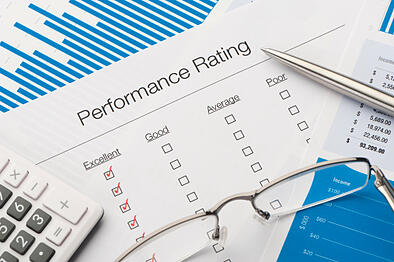 Generally speaking, we don’t like to give too many recommendations about grading, since it is quite dependent on the specifics of your course. However, we have picked up a few best practices over the years that might be useful, so we would like to take this opportunity to share them with you. At the end of the article, you'll also find an example of how one of our clients graded their students at the end of their business simulation based courses.
Generally speaking, we don’t like to give too many recommendations about grading, since it is quite dependent on the specifics of your course. However, we have picked up a few best practices over the years that might be useful, so we would like to take this opportunity to share them with you. At the end of the article, you'll also find an example of how one of our clients graded their students at the end of their business simulation based courses.
Business Simulation Course Grading Best Practices
When it comes to grading a simulation based course, we typically get two questions:
- What should be used as the winning criteria for the business simulation game?
- How easy it is to turn simulation results (cumulative total shareholder returns, profits, share price etc) to values that can be used for grading?
The answer to the first question in the case of most of our business simulation games is the 'cumulative total shareholder return' (CTSR), as it is the most comprehensive value to measure the overall performance of a team. The figure is an annualized percentage of the return to shareholders, and is composed of the change in share price, total dividends paid, and finally the interest accumulated from the dividends paid. The winning criterion can sometimes also be the 'share price' or 'cumulative profits'.
The second question is essentially about converting a set of numbers to values that are distributed over a certain range in a consistent manner. In order to do this, you can apply a formula (link at the bottom) where you have the simulation results (e.g., shareholder returns) as inputs. In addition, you decide the range into which you want to fit the values. The range can be the whole grading scale like 100-40 or 20-0 but typically the range is between 90 and 50 or 17 and 8. Note that, the best business simulation games' result becomes equal to the top value of the range and the worst simulation result becomes equal to the bottom value of the range. Once you have converted the simulation results to values over the range, you can multiply the values by a weight that you want to use for the simulation results in the grades.
The weight of the simulation results can be any percentage of the overall grade. Those who prefer a higher weight justify it by saying that having a high weight will motivate the students to invest more effort in making decisions and analyzing results. And those who prefer low weight/zero weight say that students become unmotivated when they realize early on in the game that their results will not be the greatest.
When deciding on the weights it should be kept in mind that the simulation result does not necessarily correlate with the amount of learning that the students have gained from the simulation. The most important thing is that students have been fully engaged in the process and that they are able to justify their decisions. Whether the decisions yielded good or bad results is secondary. However, this is not to say that the winners should not be recognized. Engagement is heavily based on the game-like nature of the simulation and winners deserve their moment in the limelight. Sometimes instructors give the winning team a small reward like chocolate bars or coffee tickets to the school canteen.
Suggested Areas To Measure
Business Strategy Games' Results
In many cases, the business games' results are used as a part of the grade of a simulation based course. The CTSR ratio (or any other winning criteria depending on the simulation) can be found under Results on your Cesim Instructor interface.
Team & Individual Participation
The log about spending time in the business simulator games can give you a general overview of whether the teams and team members have spent enough time in the simulated business environment to have really understood the case and make sound decisions. The amount of time used can explain some of the simulation results, and students not attending can possibly be spotted from the logs. If you are a Cesim customer, you can access this information under Courses > Logs on your Cesim Instructor interface. Note, that when two or more team members are working at the same computer, the time will be accounted only for the one who is logged in. So, logs are not a perfect measure for the amount of time spent.
Peer Review
Since teamwork forms a very important part of any simulation based course experience, it can be useful to ask students to submit peer reviews of their team mates. This can provide an insight into whether every student pulled his/her own weight during the course or mostly just went along for the ride. Peer evaluation can be for example 10% of the total grade.
Team Reporting
Writing marketing & strategy (depending on the business management games) and post-round analyses is a great way to practice iterative business plan development, and can form a significant part of the total grade. The reason being is that the dynamic cases and simulated years enable a couple of subsequent "planning - implementation - planning - implementation" sequences which simulate the changes in the competitive environment. This in turn creates the need for the students to adjust their plans as well as to look for reasons for any deviations from the plan in retrospect.
Team Presentation
After the end of the last round of the online simulation games, teams can be given the chance to present their business strategies and key learning results from the simulation. This is an excellent way to gauge their overall understanding of the subject matter and can be awarded up to 10% of the overall grade.
Quiz
An excellent way to get the students acquainted with the simulation in the beginning of the course is our integrated quiz. Using this feature will also alleviate most of the support needs that might otherwise arise later in the course. To motivate students to spend the time to familiarize themselves with the simulation a small (1-5%) part of the grade could be given based on the quiz results. Note that the platform also allows you to create your own quizzes that you could use for formative assessment at any point during the course.
The Business Simulation Grading Template
We have prepared an excel template with the calculation formula and an example set of results for you that you can download below. Also, remember that you can download the full set of teams, students, and key figures in an Excel format on the Metrics page under the Courses tab on the platform.
For a video guide about using some of the advanced features of our platform, sharing the results and downloading the aforementioned full set of results in an excel format have a look at the video below.
What Not To Do When Grading A Simulation Course
While there can be a lot of individual preferences as to how you want to grade your students, there is one set of values we don't recommend you use when doing so: ratios other than what is defined as the winning criteria for the simulation (as mentioned above, either cumulative total shareholder return, share price or cumulative profits).
The reason for this is that ratios have an optimal number, which can be either high or low, and you could be forgiven for thinking that a higher value is always better. This however is not the case in several situations.
For example, maximizing the sales revenue is clearly far from the optimal thing to do according to the economic theory. In reality, the team having a lower sales revenue at higher prices (rather than what would max out the sales revenue) and lower marketing budget is doing a lot better job. Therefore, it is wrong to reward a team with too high a ratio for increasing the ratio even more, which they will attempt to do so in case their grade depends on it!
Example Grading From A Customer
As promised earlier, here is an example of how one of our clients in France grades students with the following method (playing mainly in classroom or blended format):
1) Team performance: Ranking of the cumulative total shareholder return at the end of the game (% total grade = 40%)
2) Team involvement: Ranking of total team logs + ranking of participant logs (% total grade = 10%)
3) Team reporting: After day one or completion of rounds 1 (or 2), the team writes a strategic plan .ppt (3-5 slides) slideshow (% total grade = 10%) + after day two or middle of the simulation or completion of rounds 4 (5 or 6), the team writes a SWOT analysis .ppt (3-5 slides) slideshow (% total grade = 10%) + at the end of the simulation, the team writes a final report .ppt (10-15 slides) or letter to the shareholders (% total grade = 20%)
4) Team presentation: Instructor asks the teams (or some teams like the best and worst performing ones) to present their overall strategy in the classroom, the company development, their main corrective actions, main successes, main failures, recommendations for the future, key learning results etc. (% total grade = 10%)
As you can see, there is a lot to student grading in business simulations based courses, so hopefully this article helped you in getting started with the process.
We would love to hear how questions & comments about the grading template, and please feel free to share your own unique system for grading your students in a simulation based course.



